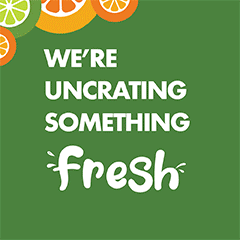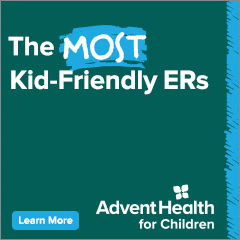“We’re All They Have”
As opioid-related deaths continue to rise dramatically nationwide, the issue has hit extremely close to home for many families her in Central Florida.
Elnora Harris, who goes by Nora, didn’t expect to be raising two young boys, her grandchildren, in her golden years. But when her son came to her and said he had a problem—that problem being he was a heroin user—she knew her life wasn’t going to be the same.
“I still worry every day about my son,” she says.
Nora immediately offered to pay for rehab. And her son did go, but it didn’t take. “I had to try it though,” she says. “I’m that way. That’s my only child.”
Sometime after her son confessed to his drug problem, she met him at the RaceTrac gas station by his house to buy him cigarettes, because she didn’t trust that if given the money he’d not spend it on drugs, and, as she says, she put an idea in his head.
“I said, ‘Son, I don’t have a drug problem and I can’t keep paying for yours,’” she says. “I said, ‘I can’t help you but think about letting me take the children because they deserve better while you get your life straight.’ And that’s how it happened.”
Often left behind in the recent catastrophic rise of heroin use nationwide and here in Central Florida are the children. And, so more and more grandparents and relatives are being faced with the heavy proposition of having to take over care for grandchildren, cousins, nephews and nieces when the children’s parents succumb to the allure of the needle.
“Did I expect it?” Nora says. “No. But I’m glad I stepped up to the plate. Because, guess what? We’re all they have.”
Nora lives by SeaWorld Orlando in an area known as Williamsburg. She gets up at 2:15 a.m. every day to go to work at the airport for her job with the Transportation Security Administration. Her partner Bob Engelbert, who goes by Bobby, is retired, so he’s able to get the boys on the bus for school in the morning. And then Nora gets back in time to meet them at the bus stop.
When she first started taking care of the boys, who are 7 and 9 years old, it was difficult. She had trouble getting one of the boys into school.
“When I took them to their pediatrician to get them into school, the little one had never been to school,” she says. “He should have been in kindergarten.”
She’s found support though, from people such as Audreka Felix, a family support coordinator who organizes the Orange County kinship program run by the nonprofit Children’s Home Network.
“She’s like an angel, really,” Nora says.
Felix, who has been coordinating the Orange County kinship program for three years, says that it has been shown that children do better when they’re with family members, so the kinship program helps children avoid foster care.
“Relative caregivers do not get as much support as foster parents or a group home,” she says. “So, as a kinship worker, I go in homes to advocate for these families because they should be getting more resources.”
Felix says the majority of the caretakers she sees are grandparents like Nora caring for children who were removed from their parents’ homes by the Florida Department of Children and Families for a variety of possible reasons including sexual abuse, domestic violence, neglect and, all too often, drug abuse.
Where It All Began
Nora believes her son’s heroin problem begin with prescription drugs. This is not uncommon. Many illicit drug users began on prescribed pain meds, according to Carol Burkett, Director of the Orange County Drug Free Coalition.
Burkett believes, as many other officials have attested to, that the staggering rise in illicit opioid use in Central Florida is partially due to Florida’s crack-down on pill mills, which were fueling the prescription drug problem of yesteryear.
The term opioids includes legal painkillers such as morphine, methadone and oxycodone. Heroin is also a type of opioid, albeit an illegal one. But, legal or not, all types of opioids can be abused.
Burkett remembers when prescriptions were the largest drug problem in Orlando, with pill mills dishing out doses like they were candy and people traveling from all over to visit the rogue pharmacies that had popped up in the area almost overnight.
“People were coming from everywhere,” she says. “I remember getting a call from the Maitland police chief and he was telling me of license plates from everywhere: Kentucky, Tennessee. He’d just rattle them off. And this was a pharmacy, not a doctor’s office.”
This was about the time that the term “doctor shopping” came into vogue, an activity where people would see multiple doctors at their different practices to procure as many prescriptions as possible. It is also when Orange County created its prescription drug task force to deal with the issue.
“The big relief came in 2011 with the legislation,” Burkett says. “The comprehensive prescription drug legislation that the state passed. And that really did have an effect on the resounding number of pre- scription drug-related deaths that we had. We saw those go down.”
But as the death toll of prescription drug users decreased, the number of heroin-related deaths increased.
“We knew that when you start shutting down pill mills and you have a population that’s addicted to an opiate, they’re not suddenly going to be not addicted anymore,” she says. “It doesn’t just go away. You hope people go into treatment. Not everybody is ready for treatment at the time.”
Burkett’s office was actually created because of the disturbing number of heroin deaths in the county back in 1999. But, she says the numbers today are much worse than they were back then.
In 2015, Orange County Mayor Teresa Jacobs, along with Sheriff Jerry L. Demings, created the Heroin Task Force to deal with the rising number of heroin related deaths.
Within Orange County, there were 85 heroin-related deaths in 2015, according to the Orange County Medical Examiner’s Office.
“So, we knew there was something here that we needed to address,” Burkett says. So far the task force has aided the county in undertakings such as getting Naloxone, a medication that can reverse the effects of opioids and save people who have overdosed, into the hands of more first responders.
The task force has also created resources like the Heroin Educational Toolkit, which educators can use in the classroom to help kids understand what opioid addiction can do to a person’s body and mind.
In 2016, about 948,000 people used heroin, while 15,400 people died from overdosing on heroin in the United States. In total, 42,200 people died from overdosing on opioids, according to data from the Centers for Disease Control and Prevention. Drug overdose is now the leading cause of accidental death in America, meaning more people die from taking drugs than they do in car accidents. This is according to a report from the National Safety Council, a nonprofit organization that works to eliminate preventable deaths.
Locally in 2016, there were 66 deaths in Orange County due to heroin overdoses, while 68 people died due to fentanyl, a synthetic opioid analgesic that is 50 to 100 times more potent than morphine. From January to October in 2017 there were 54 deaths from heroin and 142 deaths attributed to fentanyl and fentanyl analogues. The Orange County Medical” Examiner’s Office has yet to finalize the death toll for November and December 2017.
Fentanyl-related deaths are rising in Central Florida as it’s become more available on the streets. Drug makers w ill often lace fentanyl into the heroin they sell because it is cheap and potent. This increases the risk of overdose as the user is often unaware that the heroin is not pure.
According to the Florida Department of Health’s Bureau of Emergency Medical Oversight, the majority of people who are dying from heroin-related deaths are white males ages 25 to 44. But, the drug is used by the young and old and by males and females.
“I always tell people, this drug doesn’t just affect one person or one group,” Burkett says. “Drug addiction affects everybody.”
The Babies and the Moms Too
Dr. Doug Hardy, a neonatologist at the Winnie Palmer Hospital for Women & Babies, deals with screaming babies a lot in his line of work. Lately, he’s dealt with more and more babies whose highpitched crying is brought upon by other reasons than leaving their mother’s womb. These babies cry because they’re going through opioid withdrawal.
“You know babies cry, that’s part of being a baby,” says Dr. Hardy. “You don’t have a lot of other ways to tell people that you need something. So, they cry. But these babies are oftentimes inconsolable.”
Babies going through withdrawal, called neonatal abstinence syndrome, experience severe muscle spasms, sleep problems, difficulty breathing, vomiting and diarrhea.
“They’re very hard to comfort,” Hardy says. “And a lot of that is because all the same things that adult addicts go through, these babies are going through as well.”
There is not much hospital staff can do for a baby who is going through neonatal abstinence syndrome. Sometimes the babies need to be on medicine, but the doctors try to avoid that if possible. On average, the babies will be in the hospital for seven to 14 days. For babies who are given medicine, their hospital stay is usually a bit longer at an average of 14 to 28 days.
During this time, Hardy and his staff work to get the mom involved with the baby’s care. But if the mom is sick and unable to be with her baby, volunteers stand in for her.
One common misunderstanding in these situations is when people angrily question why the mother didn’t just quit using when she found out she was pregnant.
The answer is not that simple, Hardy says.
When a woman becomes pregnant and she is already an opioids user, she is advised to not quit cold turkey because the stress on her body when quitting affects the fetus greatly and can lead to her delivering a stillborn baby. Instead, obstetricians generally refer women to medical-assisted treatment programs where they are given smaller doses of legal opioids such as methadone to sustain them through their pregnancy. Unfortunately, this means the baby will still suffer through neonatal abstinence syndrome when they are born.
Fortunately, babies generally do not experience long-term side effects. However, these children do face other psycho-social issues in their home environment, which is why Hardy says care needs to be extended to deal with the realities mom and baby face outside the hospital.
“An effective program is one that is going to be dealing with that mom not only after she has the baby and in the hospital, but when she goes home, to make sure that everything is done to prevent her from relapsing,” he says. “And that is one of the best things we can do for the babies, but it’s very, very difficult to do.”
Hardy is a member of the Orange County Heroin Task Force. He also serves as chairman of the state’s Infant Health Subcommittee of the Florida Perinatal Quality Collaborative. In the fall, he says the committee will be taking on a neonatal abstinence syndrome project where they will look for more ways to help these babies including increasing communication between obstetricians and treatment programs, so there is a more streamlined way to get opioid-addicted mothers into programs.
And, although he knows it’s difficult for people to do, Hardy stresses the importance of finding a sense of humanity in dealing with mothers in these situations.
“Compassion sometimes is a huge part of their treatment,” he says.
New Horizons
Bobby and Nora are sitting in the “Pride” conference room of a nondescript building off of Westgate Drive in Southwest Orlando. They are attending the Orange County Children’s Home Network “Taco Tuesday” kinship meeting.
They come to these meetings to let the grandchildren play with the other kids. They come to these meetings to feel less alone.
One attendee, another grandmother who is raising her son’s children because of his drug problem, remarks on this. “It’s wonderful to be able to talk to people who are going through the same thing,” she says.
She’s talking with Bobby and Nora who are relaying, somewhat venting, about what they’ve been through, too.
A year and half ago, when Nora and Bobby began caring for Nora’s two grandchildren, she was nervous.
“It was very scary,” she says. “It is scary. But, you know, they’re amazing children.”
One of her grandchildren rushes out into the hall where her and Bobby are now standing. He’s come to show off a drawing he just made.
“Oh, another plane. Nice,” Nora tells him.
Nora ushers him back inside the room to go be with his brother. She says she’s proud of the strides the boys have made since they started living with her and Bobby. Their grades have improved and the boys even made the honor roll at their elementary school.
Nora is set to adopt her grandkids any day now. Meanwhile, her son, the children’s father, can only visit the children with her supervision. Her son is still struggling with drug addiction, but like only a mother can, she says she’ll always love him.
“No matter what, I’ll never turn my son away,” she says.
And, although, it’s not what she expected to be doing six years out from her retirement, today she is content knowing that the kids are taken care of and excelling in school.
“They’re very happy,” Nora says. “The little one, I was reading to him tonight ’cause every night they have to read and, you know, he does so good.”
She says that her youngest grandson will read to her first and then she’ll read some of the book to him. She uses a bookmarker to show him which sentence she’s on, so the boy can follow along.
“When we were done, he had read four chapters,” she says. “He turned and hugged me.”
She looks at the youngest boy who has now also made his way into the hall to get his grandma’s attention.
“What did you tell me after I read to you,” she asks him.
“You are the best mom,” he replies.
Nora smiles. “So, that’s pretty great,” she says.
This article originally appeared in Orlando Family Magazine’s February 2018 issue.








